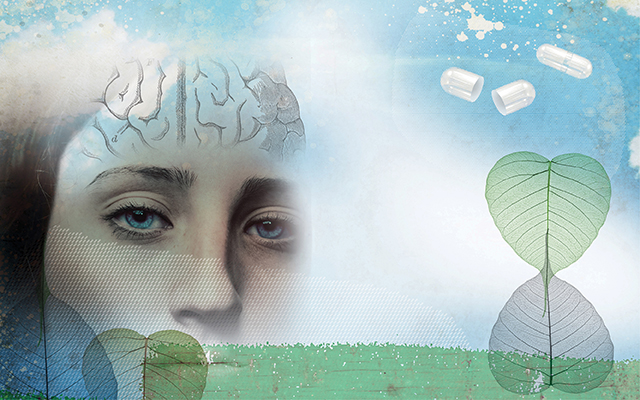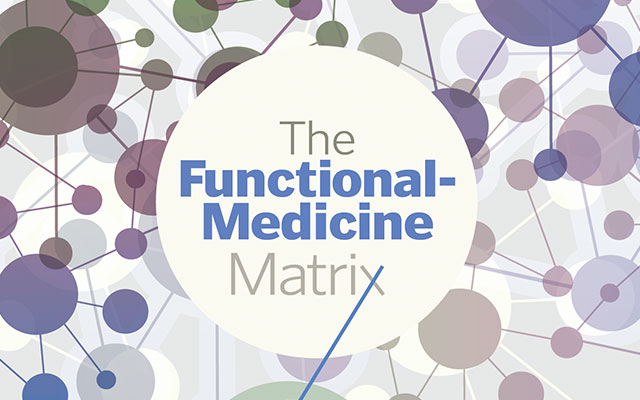Bonnie Anderson lives with her partner, Don, in a small, white bungalow in Austin, Minn. For 40 years she worked as a telephone operator for the town’s main employer, Hormel Foods, and has stayed active into her retirement. She loves nothing more than playing an 18-hole round of golf.
But in 2005 she slipped on wet tiles in her kitchen, landed on the floor, and fractured her spine. The accident left her in constant pain, unable to stand long enough to do the dishes.
“I couldn’t sleep at night,” she says. “I couldn’t play the golf I wanted to play. I’d go sit in the den with a heating pad.”
A few months after her accident, Anderson went to the Mayo Clinic in Rochester, Minn., to take part in a trial for an outpatient procedure called vertebroplasty, which involves injecting medical cement into fractured bone to strengthen it. She walked out of the hospital after the procedure and felt better immediately.
“It really took care of the pain. I was able to go back to golfing and [to doing] everything I wanted to do.”
Almost a decade later, Anderson says she is still delighted with the outcome. “It was a miracle how well it turned out,” she says. At 84, she is looking forward to playing more golf.
The vertebroplasty seemed to heal the effects of Anderson’s fractured spine. Except there was something Anderson didn’t know when she took part in the trial: She wasn’t in the vertebroplasty group. The procedure she received was fake.
The phenomenon in which people experience relief from symptoms after a fake treatment is called the placebo effect, and it is well known in the medical world
The phenomenon in which people experience relief from symptoms after a fake treatment is called the placebo effect, and it is well known in the medical world. Clinical trials have consistently shown a strong placebo effect across a wide range of conditions, including asthma, high blood pressure, gut disorders, morning sickness, and erectile dysfunction. Medical professionals generally view these recoveries as statistical anomalies, arguing that the patients would have improved whether they’d received the treatment or not. According to the rules of evidence-based medicine, these improvements are worthless.
But by dismissing the experiences of patients like Anderson, for whom the absence of pain is worth a great deal, I can’t help but wonder, as a science journalist, whether we are throwing out something that could be of real help. Might the placebo effect have real clinical value? Can a simple belief — that we are about to get better — have the power to heal?
The Body’s Pharmacy
Fabrizio Benedetti, MD, a professor of neuroscience and physiology at the University of Turin in Italy, studies the placebo effect and sees it in every aspect of life. He says if he gives me a glass of wine and tells me how good it is, that will affect how it tastes to me. “We are symbolic animals,” he explains. “The psychological component [of experience] is important.”
His interest in the placebo effect began in the 1970s when scientists had just discovered endorphins, the class of molecules produced in the brain that act as natural painkillers. Endorphins are opiates, like morphine and heroin, except that the brain produces them itself.
In one early experiment, a researcher at the University of California, San Francisco, tested whether a placebo could trigger the release of these endorphins. A third of the patients in the study, who were recovering from oral surgery, reported significant pain relief after receiving a placebo through an IV. Then, without their knowledge, they received a dose of naloxone, a drug that blocks the effects of endorphins, also through the IV.
Their pain returned.
It was at this moment, Benedetti says, that “the biology of placebo was born.” It was the first evidence of pain-relieving biochemical pathways behind the placebo effect.
In his own trials, Benedetti identified more natural brain chemicals that, triggered by our beliefs, can turn our response to pain up or down. He found that when placebo painkillers replace opiate drugs, they don’t just relieve pain; they also slow breathing and heart rate, just as opiates do.
He also found pain-relieving placebo effects that are not mediated by endorphins and can’t be blocked by naloxone. Benedetti emphasizes that the placebo effect isn’t a single phenomenon but a “melting pot” of bodily responses, each using ingredients from the brain’s natural pharmacy, as well as from other sources we’re still learning about.
Honest Placebos
The central dogma running through all discussions of the placebo effect is that, for it to work, you have to believe you are receiving a real treatment. But placebos can work even when patients know they’re taking them.
The foremost researcher of the placebo effect is Ted Kaptchuk, a professor of medicine at Harvard Medical School, who wanted to see what would happen when study participants understood clearly that they were taking a placebo. He conducted a three-week trial on 80 patients with irritable bowel syndrome (IBS). Half the group knowingly received a placebo pill and were told that although the capsules contained no active ingredient, they might work through mind–body, self-healing processes.
Placebos can work even when patients know they’re taking them.
“Everyone thought it was crazy,” Kaptchuk says, but results of the trial, published in 2010, show that patients who were consciously taking placebos did significantly better than those who received no treatment. (I spoke to one study participant, a medical assistant named Linda, whose chronic IBS symptoms disappeared for the duration of the three-week trial, but then returned at its conclusion.) It appeared that the act of taking a pill was enough to trigger the body’s own healing response.
Kaptchuk’s more recent pilot studies of patients with depression and migraines have produced similar results. When migraine patients know-ingly took a placebo during an attack — known as an honest placebo — they felt a 30 percent reduction in pain compared with having no treatment. “My team was totally taken aback,” he says.
One of the barriers to using placebos in medicine is the concern that it’s unethical to deceive patients. Yet Kaptchuk’s studies suggest that honest placebos can work as well — even though there’s no expectation that the drug is going to work in the conventional sense, and there’s no reason for the body’s natural painkillers to kick in. Yet, somehow, they do.
States of Mind
It’s becoming more acceptable in the medical community to acknowledge that mental states can influence our physical health in measurable ways. The body of research on stress and health makes this especially clear.
Acute stress boosts the immune system in anticipation of danger or an injury, but when it stays activated for too long, it begins to rage out of control, leaving us vulnerable to chronic inflammation. Too much inflammation leads to slower wound healing and can exacerbate autoimmune diseases, such as eczema and multiple sclerosis. It can also be a precursor for many serious conditions, including cancer. Chronic stress, meanwhile, can raise blood pressure and damage blood-vessel walls, leading to clogged arteries and heart disease.
So it follows that when we’re receiving medical care, our mental state matters. Those who feel alone and afraid do not do as well as those who feel supported, safe, and in control. It matters when we feel cared for. It makes a difference in how well we heal.
This may be why forms of treatment that don’t involve drugs at all, but focus instead on relieving stress and providing emotional support, can have such powerful pain-relieving effects.
Treatment that don’t involve drugs at all, but focus instead on relieving stress and providing emotional support, can have powerful pain-relieving effects.
Interventional radiologist Elvira Lang developed an approach called Comfort Talk while working at Harvard Medical School in Boston. Instead of dishing out drugs to nervous patients before a procedure (she typically performed “keyhole surgeries,” operations during which the patient remains conscious), she opted to mobilize her patients’ psychological resources. She used a blend of empathic communication skills, positive suggestion, and visual imagery to help patients relax and ease their pain.
In every research trial, patients who received Comfort Talk reported far less pain and anxiety than those who’d received only standard care.
The trials revealed practical physical benefits, too: Patients required much lower levels of sedative drugs and suffered far fewer complications. In one trial of renal- and vascular-surgery patients, for example, the dosage for those in the intervention group was half that of patients in the group that didn’t receive the treatment. Surgeons also completed the procedures 17 minutes faster, on average, saving hospitals an average of $338 per patient.
Lang also worked with placebo researcher Kaptchuk to study the “nocebo” effect, or how the expectation of pain affects patients’ actual pain. They found that when patients received warnings like “this may hurt” before potentially painful events such as an injection, their pain and anxiety scores soared.
When Lang conducted Comfort Talk training for a medical team that performed MRI scans, she emphasized the importance of eliminating any negative or potentially frightening language during the procedure. (Patients were told ahead of time about any potential discomfort, but that was it.) She also instructed the providers to help patients visualize positive images. They encouraged children to think of the MRI scanner as a rocket ship and adults to imagine it as a massage table — even offering a choice of aromatherapy to supplement the illusion of a spa visit.
These adjustments may seem modest, but in a study of 14,000 MRI procedures in clinics that used Comfort Talk, the “claustro” rate — when a scan is aborted because the patient panics in the machine — was reduced by 40 percent, saving hospitals between $750 and $5,000 for each scan.
If a drug showed that kind of result in clinical trials, it would be front-page news.
Beyond Separation
Bonnie Anderson’s fake vertebroplasty banished her pain and disability, but it probably didn’t mend her spine. Placebos don’t create an all-powerful, protective magic that can keep us well in every circumstance. And they have two important limitations.
The first is that any effects caused by a belief in a treatment are limited by the body’s available natural tools. A placebo might help a patient with cystic fibrosis breathe a little more easily, but it won’t create the missing protein the lungs need. For someone with type 1 diabetes, a placebo can’t replace their dose of insulin.
Second, a variety of placebo studies have shown that our expectations about outcome tend to affect only our symptoms — things we are consciously aware of, such as pain, itching, rashes, or diarrhea, as well as cognitive function and sleep. Placebo effects also seem to be particularly strong for psychiatric disorders such as depression, anxiety, and addiction.
But what is common to all these approaches, whether placebo pills or encouraging talk, is that more doctors are considering their patients’ mental states. Instead of employing ever-greater doses of drugs and interventions, these medical professionals are harnessing their patients’ psychological resources as a critical component of their care. The symptom relief that patients experience is undeniably real.
This is what seems to make the difference.
We can’t rely solely on the mind to heal us, but denying its role in medicine isn’t the answer either. My hope is that this research helps us overcome some of the prejudice against mind–body approaches to healing, and to recognize that taking account of the mind in health is actually a more scientific and evidence-based approach than relying more heavily on physical interventions and drugs.
Nearly 400 years after the philosopher Descartes declared a fundamental separation between mind and body, we still tend to think of ourselves as rational beings with highly developed minds that allow us to transcend our biological animal nature.
Yet the evidence shows something very different: Our bodies and minds have evolved in exquisite harmony, so perfectly integrated that it is impossible to consider one without the other. By understanding how our minds influence and reflect our physiology, perhaps we can finally live in tune with our bodies and care for them in a way that is based in evidence, and not delusion.
Heal Your Mind
Understanding that the mind plays a role in mediating pain, inflammation, and other physical states can be intimidating if we believe we don’t know how to manage our stress. Research has shown that these stress-reduction techniques can improve physical health:
Meditation
Italian researchers scanned the brains of meditators and found that the subjects were better able than nonmeditators to down-regulate activity in the default-mode network — the ruminating, worrying part of the brain. Mindfulness meditation involves observing the mind thinking without becoming attached to its thoughts, which can show that we don’t have to be ruled by them. (For more on the rewards of meditation, see “Brain-Body Benefits of Meditation.”)
Reframing Stress
How you perceive a stressful event makes a big difference in how your body reacts. Psychologist Wendy Mendes, PhD, a researcher at the University of California, San Francisco, suggests imagining a skier who faces a steep, icy trail that’s her only way down a mountain. Depending on how experienced she is, her dominant response will be either fear or exhilaration — and these have very different effects in the body.
Both trigger the sympathetic nervous system, but exhilaration affects it to a greater extent. Peripheral blood vessels dilate and the heart works more efficiently, pumping oxygenated blood to the limbs and brain. People experiencing this response perform better physically as well as mentally.
Fear, on the other hand, causes the body to go into damage-control mode. Blood vessels constrict and the heart beats less efficiently, so less blood is pumped around the body. (This would minimize blood loss if you were caught and injured by a predator.)
Psychologists’ terms for these contrasting responses are “challenge” and “threat.” Mendes has found that people who experience a challenge response bounce back to normal fairly quickly, while people in a threat state take longer to recover, both mentally and physically.
She’s also found that simply changing how you think about your physical response to stress can have a dramatic effect. In studies, participants who learned to positively interpret signs of stress, such as an elevated heart rate, performed better on tests and recovered more quickly.
This originally appeared as “The Placebo Effect” in the December 2017 print issue of Experience Life.




This Post Has 0 Comments